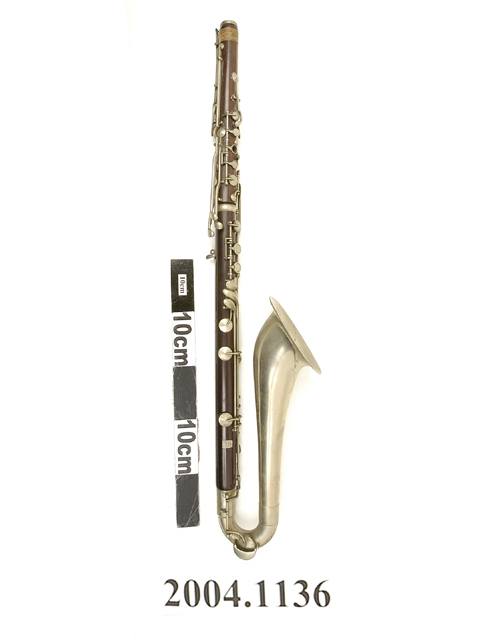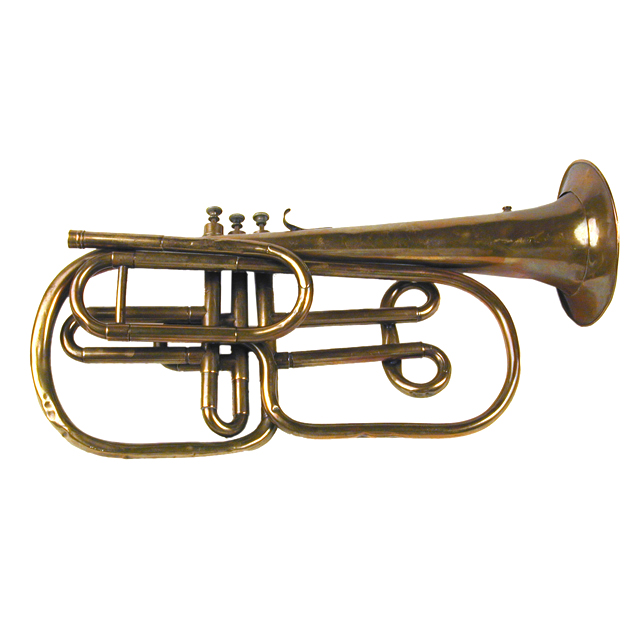




Bass clarinet in B-flat, model A116. Brya ebenus (cocuswood) body with German silver bell, ferrules and keywork. Keys have leather pads. Boehm system is used for upper joint keys, and simple system for lower joint. Diatonic extension of compass to low D and C. String lapped tenon on upper joint. Crook and mouthpiece missing. Upper joint is stamped: BOOSEY & Co./295 REGENT STREET/LONDON/6873. Lower joint is stamped: BOOSEY & Co./LONDON/6873. Upper joint also has paper label, in the hand of David James Blaikley that reads: 129 BASS CLARINET/WITH EXTENSION/TO LOW
overall: 1000 x 163 x 163 mm;
The 'Boehm' key system on modern clarinets was developed in France in the 19th century and was later adopted in Britain. This instrument represents a transitional phase in the process as it uses the Boehm system on the upper section (for the left hand) and the earlier 'simple' system on the lower section. The instrument was retained by Boosey as part of their instrument collection, which later became the basis of the Boosey & Hawkes museum at Edgware. It still carries a label handwritten by the company's works manager D. J. Blaikely, who founded the Boosey collection as a resource for his pioneering work in instrument design.






